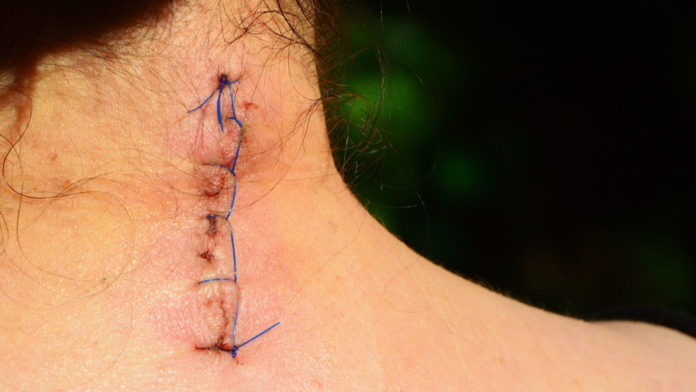The way that wounds close affects whether they will fully heal or whether they will scar.
Remarkably, when fruit fly embryos get scratched or injured in the egg, they don’t have any scars after hatching. Understanding how these wounds heal without scarring has important implications in healthcare, from informing the best ways for doctors or surgeons to give stitches, to improving how heart attacks are treated.
Rodrigo Fernandez-Gonzalez, associate professor of biomedical engineering at the University of Toronto, says that although insects seem very distant from humans, wound healing in fruit flies has many molecular parallels to wound healing in people.
“There are many human genes that have a counterpart in these insects that we can study,” says Fernandez-Gonzalez. “This is amazing, because in fruit fly embryos, we can observe how cells behave in real time inside a living organism, which is not something we can do — ethically or practically — in humans.”
The study used quantitative microscopy and mathematical modeling to tease apart the behaviour of two proteins, actin and myosin, that are found at the edges of wounds as they heal. You can think of these proteins as molecular cables and motors that assemble into structures that help pull the wound closed.
What’s interesting is that actin and myosin are not evenly spread out around the wound margins. Their distribution is dynamic and non-uniform, and their precise locations influence how they help tug at wound edges.
Actin and myosin at the wound site send mechanical signals to nearby cells, helping them communicate with each other to coordinate movement in a way that promotes scar-free healing.
“Our work may shed light into why applying certain patterns of physical forces to wounds facilitates healing,” says Teresa Zulueta-Coarasa, PhD student and the study’s first author.
This means that when external forces are applied to try to speed up wound healing, like giving a patient stitches, the way that those forces are applied can have an impact on whether scar tissue will form.
However, it’s important to remember that scars do serve a purpose. While embryos are in a sterile environment, after birth any cuts to the skin need to seal quickly to prevent infection. The deeper the cut, the more important speed becomes, and this is when the wound repair process tends towards scar formation.
So while more work needs to be done to understand when scarring can safely be reduced, and the best ways to approach this in adult humans, this work illuminates one example of how wounds can fully heal.








































